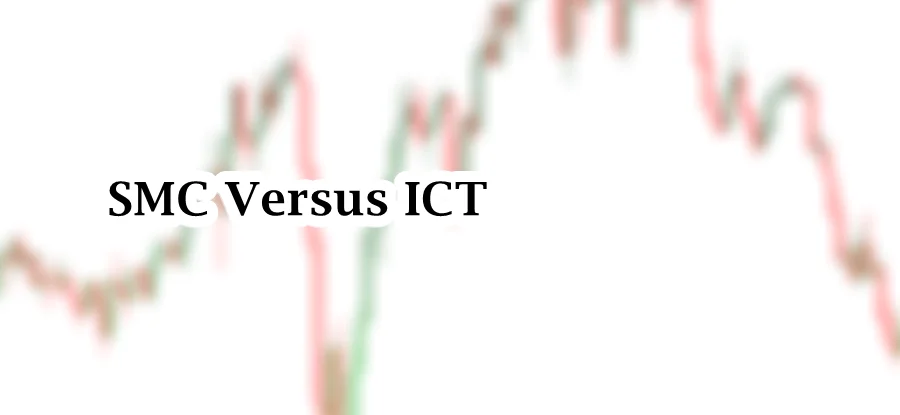
Table of Contents
Trend continuation and reversal is identified through Break of Structure (BOS) and Change of Character (CHOCH). It is the most suitable way of mapping structure in the market. SMC and ICT trader use such concepts to identify order flow in the market. However, it never allows traders to enter market with immediate momentum shift. Sometime traders miss opportunities by just waiting for the BOS or CHOCH.
Change in State of Delivery (CISD) is concept used in ICT methodology. CISD represent shift in market behavior. This article explores its understanding, key differences with change of character, appearance in bullish and bearish market, and rules that must be followed by smart money traders.
Understanding Change in State of Delivery (CISD)
Change in State of Delivery can be viewed as reversal pattern. In CISD, a sudden change in price momentum signals a significant change in market sentiment or institutional activity. Sudden shift in market with strong volume represent strong market participation by its participants. This concept is dependent on key levels where market grab liquidity and then sharply reverses its direction.
In uptrend, market often clears buyside liquidity or liquidity near equals highs and then sharply reverse its direction. In the below example, we mark the recent low as origin and then we look for the break of structure. The structure is clearly bullish. At first, we anticipate the price to go up, but in the below example, market breaks the origin point and conducted Change in State of Price delivery.

The reverse scenario is applicable in downtrend market. In downtrend, market often clears sell side liquidity or liquidity near equals lows and then sharply reverse its direction. In the below example, we mark the recent high as origin and then we look for the break of structure. The structure is clearly bearish. At first, we anticipate the price to go down, but in the below example, market breaks the origin point and conducted Change in State of Price delivery.

Key difference in CISD and CHOCH
Change of Character and Change in State of Delivery is different in many ways.
Change of character occurs when price breaks well-defined levels of market structure like swing high in a bearish trend and a swing low in bullish trend. CHOCH is commonly used to identify trend reversal. Breach of key levels of market structure indicate change of momentum. Change of character is more conclusive and gives clear sign of market reversal.
Change in State of Delivery (CISD) focuses on sudden momentum shift rather than complete trend reversal. Although, it highlights important shift in market dynamics. CISD offers more quicker and earlier trading opportunity. It signals that market is experiencing a sharp change in price movement. This sharp movement is usually driven by institutional orders.
Advantage of CISD
One of the Advantage of Change in State of Delivery is its ability to signal market structure shift earlier than change of character. It gives traders an opportunity to enter in trade earlier without waiting for CHOCH. However, there are rules in identifying CISD. The reason is that if not identified properly, it will lead to unsuccessful trades.
Rules in Change in State of Delivery
There are essential rules to follow while labeling Change in State of Delivery in market. It is more sensitive than CHOCH because incorrect identification often leads to essential losses. Following are the rule helps maximize the probability of successful trades in bullish and bearish market.
Rejecting a higher timeframe key level
In ICT market structure is crucial to analyze. It helps in identification of key levels on higher timeframes. In ICT context, it helps in identifying Order Block, Fair Value Gaps and Liquidity Areas. These levels hold significant weight because these levels and zones influence price movements heavily across different timeframes.
In Bullish market, a higher timeframe order block, Fvg, or Liquidity area may reject the price and causes the CISD to form as reversal signal. The higher timeframe confluence dramatically increases the chances of a successful trade.
In Bearish market, a higher timeframe order block, Fvg, or Liquidity area may reject the price and causes the CISD to form as reversal signal. The higher timeframe confluence dramatically increases the chances of a successful trade.
Sweeping a Liquidity
Liquidity pools are areas of stop losses or pending orders around key levels, such as equal highs in a bullish market or equal lows in a bearish market. The market tends to target these liquidity pools to trigger stops and collect liquidity before reversing.
In a uptrend market, price sweeps a liquidity pool above equal highs, triggering stop-loss orders of traders. After collecting liquidity, a CISD pattern forms, indicating that smart money (institutional traders) may now push the price downward, signaling a strong reversal.
In a down trending market, price sweeps liquidity above equal lows, triggering the stop-loss orders of traders. A CISD appearing after the liquidity sweep signals a reversal downward, offering a high-probability shorting opportunity.
Liquidity sweeps help identify potential reversal zones, and combining this with a CISD makes the setup stronger.
Volume and Confirmation
Volume is crucial for confirming the validity of a CISD setup. A sudden momentum shift needs to be supported by higher volume, indicating increased participation by institutional players and other large market participants.
In a down trending market, a CISD with a noticeable increase in volume at a key support zone suggests that buyers are stepping in with strength. It makes the reversal more significant.
In a uptrend market, if a CISD forms at resistance and is accompanied by higher volume, it indicates that sellers are taking control of the market. This pattern is a confirmation of trend reversal.
Without sufficient volume to back the move, a CISD can be unreliable, as price shifts without meaningful participation may lead to false breakouts or continued trends.
Waiting for the Pullback to the previous Level
After a CISD, it’s essential to wait for price to retest the broken level, nearby order block, or Fair Value Gap (FVG) before entering a trade. This pullback offers a better risk-reward entry and confirms the reversal.
In a down trending market, once price shifts upward after a CISD at support, wait for a retest of the broken resistance (which becomes new support), an order block, or an FVG. This retest often acts as a confirmation of the new bullish trend.
In a uptrend, after the price drops following a CISD at resistance, wait for the price to pull back to the broken support (now resistance), an order block, or an FVG. The pullback offers an ideal entry point to join the new bearish trend.
Patience is crucial in this rule to ensure that the price confirms the reversal rather than entering too early or too late. Example from market is given below:

Final Note
In conclusion, trading with the Change in State of Delivery (CISD) can be highly effective when combined with key levels, liquidity sweeps, volume confirmation, and retests. However, it is essential to practice patience, wait for proper setups, and always use confluence for better decision-making.
Risk Disclosure: Trading involves significant risk, and traders can lose capital if market conditions change unexpectedly. Always use risk management strategies, such as stop losses, and never trade with money you cannot afford to lose. Past performance does not guarantee future results. Trade responsibly and be aware of market volatility.
Frequently Asked Questions (FAQs)
What is CISD?
CISD, or Change in State of Delivery, is a reversal pattern that signals a sudden shift in price momentum. It indicates that institutional order flow has changed, potentially leading to a reversal in price direction.
How is CISD different from CHOCH?
While CISD focuses on sudden momentum shifts, CHOCH (Change of Character) marks a clear break in market structure, such as swing highs or lows, signaling a more confirmed trend reversal. CISD often appears earlier than CHOCH.
When is CISD most effective?
CISD is most effective when it occurs around higher timeframe key levels or after a liquidity sweep. These factors increase the likelihood of a meaningful market shift.
I’m Abdullah Shah, a content writer with three years of experience in crafting engaging and informative content. My background in market analysis complements my work, allowing me to create content that resonates with audiences. I’m also a seasoned practitioner in the forex and crypto markets, with a strong foundation and deep interest in finance. My passion for the financial world drives me to produce content that is both insightful and valuable for those interested in understanding market trends and financial strategies.





